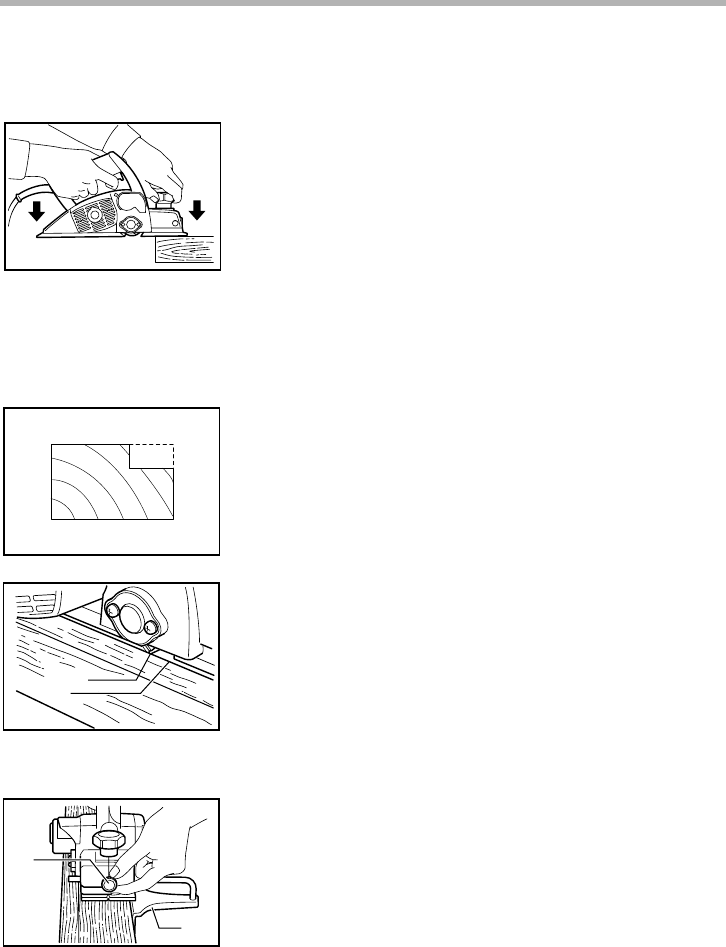
11
OPERATION
Planing operation
First, rest the tool front base flat upon the workpiece surface
without the blades making any contact. Switch on and wait
until the blades attain full speed. Then move the tool gently
forward. Apply pressure on the front of tool at the start of
planing, and at the back at the end of planing. Planing will be
easier if you incline the workpiece in stationary fashion, so
that you can plane somewhat downhill.
The speed and depth of cut determine the kind of finish. The
power planer keeps cutting at a speed that will not result in
jamming by chips. For rough cutting, the depth of cut can be
increased, while for a good finish you should reduce the
depth of cut and advance the tool more slowly.
Shiplapping (Rabbeting)
To make a stepped cut as shown in the figure, use the edge
fence (guide rule).
Draw a cutting line on the workpiece. Insert the edge fence
into the hole in the front of the tool. Align the blade edge with
the cutting line.
Adjust the edge fence until it comes in contact with the side
of the workpiece, then secure it by tightening the screw.
When planing, move the tool with the edge fence flush with
the side of the workpiece. Otherwise uneven planing may
result.
Maximum shiplapping (rabbeting) depth is 9 mm (11/32”).
1. End
2. Start
1
2
002579
002580
1. Blade edge
2. Cutting line
1
2
1
2
002582
1. Screw
2. Edge fence
1
2
002583


















